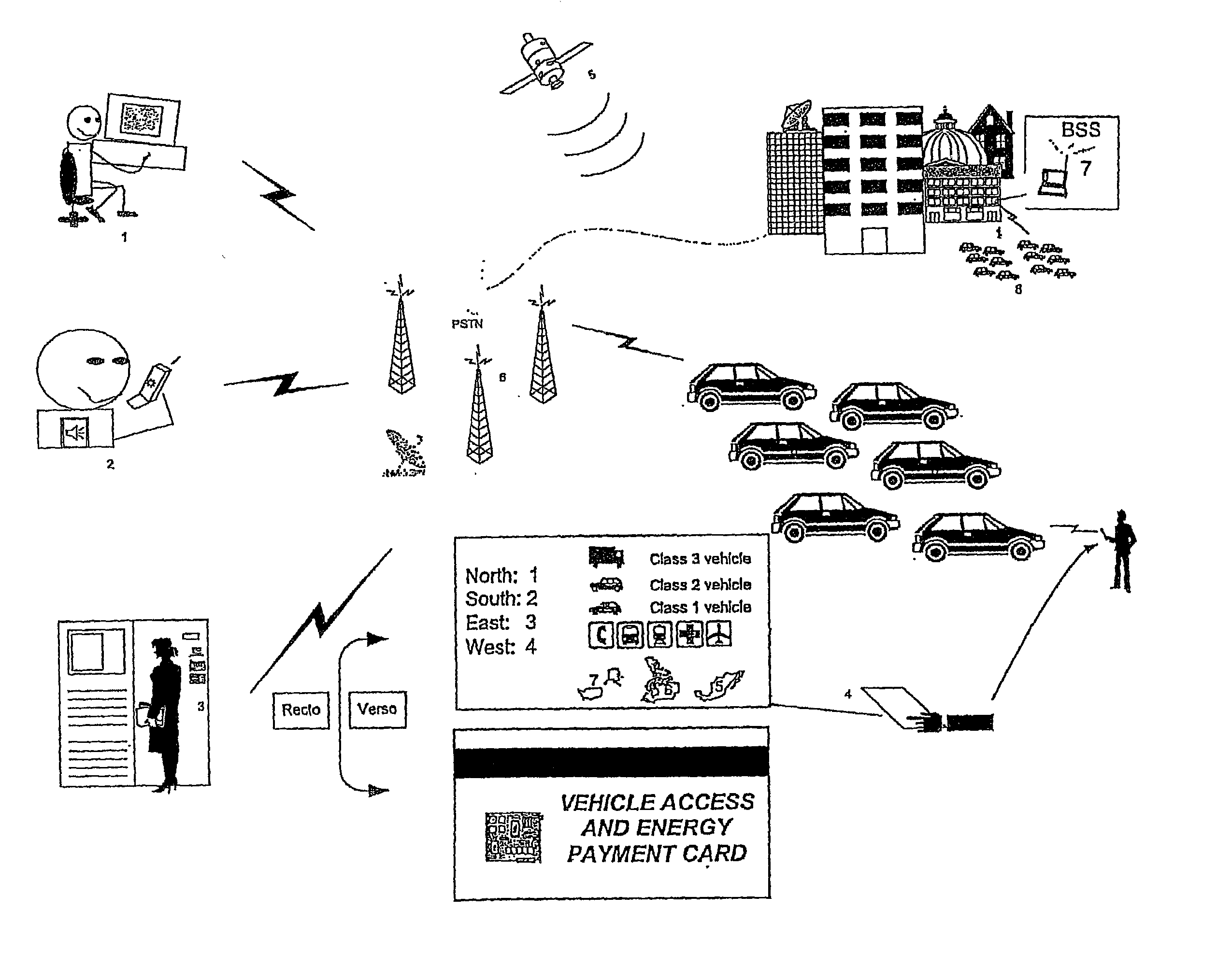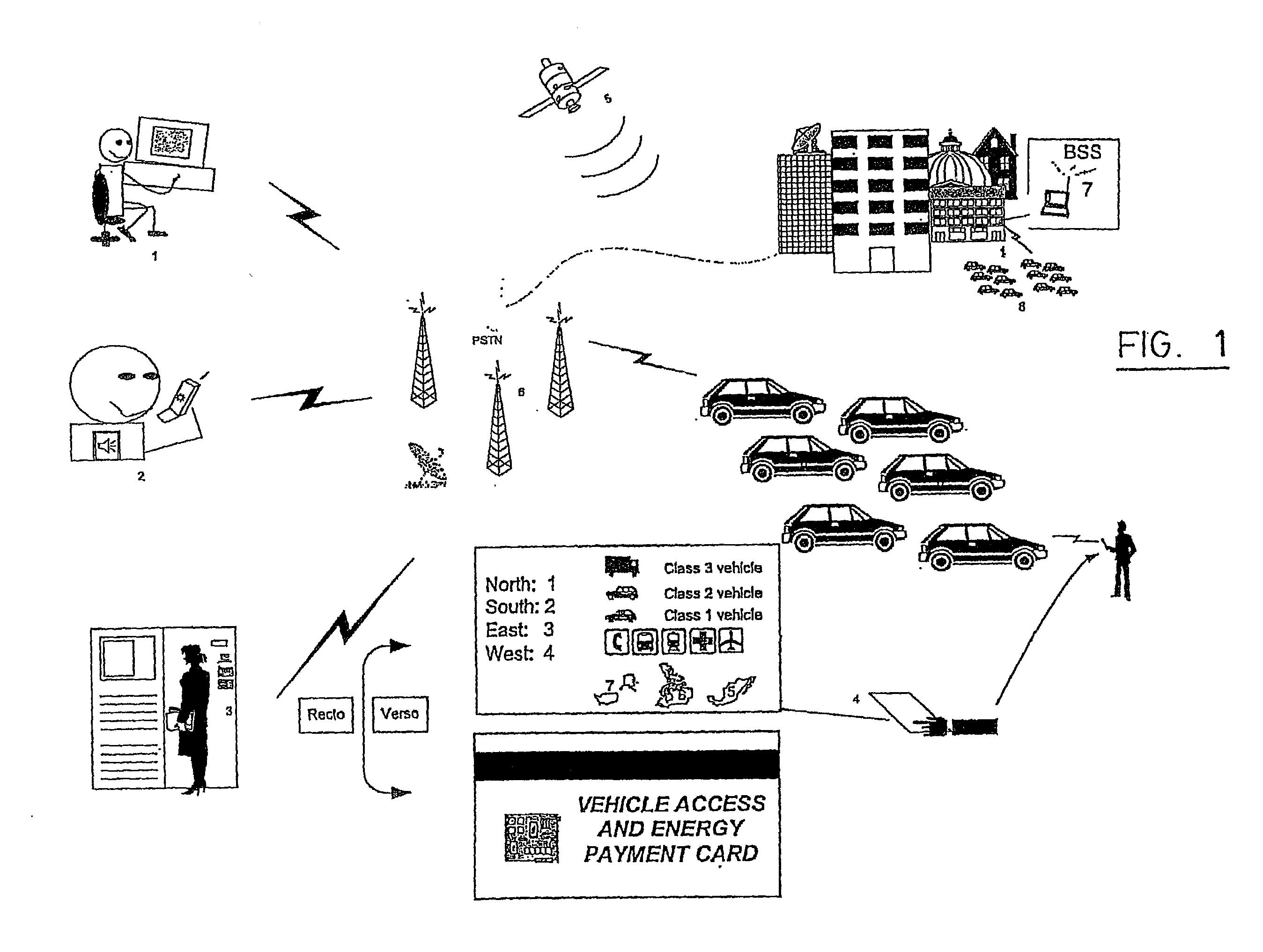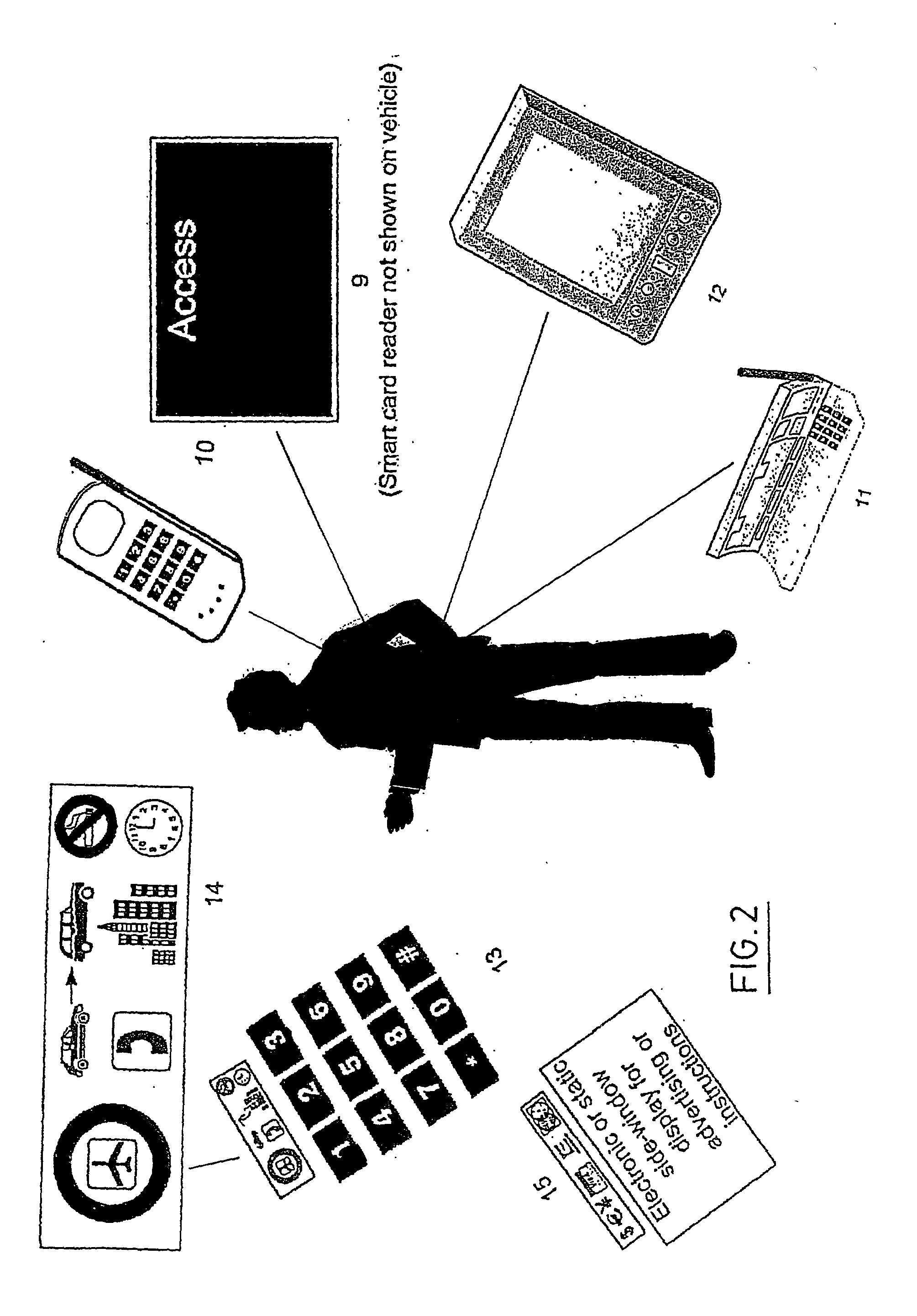However, the process of
renting a vehicle from start to finish is relatively complex by nature: it involves assets of high value, complex behaviors on the part of users and significant safety or security issues.
All of these factors contribute to the difficulty of automating the entire vehicle rental process reliably.
However, from the vehicle rental
service provider' point of view, the possibility of responding to this type of mobility revolution has been limited by several factors.
Firstly, this form of vehicle rental generates shorter rental periods, the consequence of which are less revenue and higher transactional costs per contract.
Furthermore, many locations where a need for service is currently expressed cannot be supported economically with the current art because of the combined requirements in manpower, occupancy and capital expenditures being disproportionate with the anticipated volume of activity.
On-request urban mobility can also imply numerous widely dispersed service locations and unbalanced flows between those due to an increase in one-way itineraries.
One-way itineraries are especially difficult to accommodate for service providers who do not have a
service location at the desired destination or if vehicles from different service providers get mixed into the same fleet, a common occurrence within the road vehicle rental industry for instance.
However valuable, such systems only apply to a relatively minor portion of the entire vehicle rental process and they are generally not designed to radically alter the
cost structure or method in which vehicles are rented today.
Although such methods can theoretically provide accurate measurements, it is believed that a high level of in-vehicle customization has discouraged the
market acceptance of some systems.
In fact, it can generally be said that the prior art which relies on numerous in-vehicle sensors and customized circuitry to gather the necessary information to process a rental transaction poses significant difficulties for the majority of service providers.
Therefore, systems that require a great amount of cabling, calibration and skill to install generate unacceptable costs and delays to the majority of service providers.
Furthermore, it is common for vehicle manufacturers to void their warranty if the
electrical wiring within a vehicle has been tampered with, thus causing additional risks for the rental vehicles providers that use cabled systems.
It is also well known that within the vehicle rental industry hired vehicles are frequently subjected to abusive, negligent or criminal behaviors.
Consequently, service providers have been reluctant to adopt systems that fail to properly address the liability, regulatory, security and safety issues associated with the vehicle rental process.
It is a concern that within such systems, an act of theft, negligence or an equipment malfunction could have grave consequences.
This in turn, results in a complicated and unaccountable rapport between vehicle rental service providers, users and the traffic violations issuing bodies.
Often, some users also fail to bring rental vehicles back on due time.
Additionally, it is generally believed that a minority of users causes the majority of damages on rental vehicles.
In all those cases, very significant costs are added to the vehicle rental activity because of many users' behavior being less than ideal.
Particularly, the
impact of unreliable reservations is exacerbated in short term rental systems since the same vehicle is scheduled to be rented out several times a day and since each different user is dependent on the adherence to the reservation schedule of all prior users on that day.
In fact, it is very difficult for a vehicle rental
service provider to accommodate such user behaviors with the prior art without being forced to reduce the utilization rates of its fleet, which in turns threatens the economic viability of short-term rental systems.
With the current art, most service providers also have no reliable method to encourage good behavior on the part of users apart from creating lists of unwanted users or charging penalties for lost revenue and damages at the risk of a dispute.
This creates a difficult balancing act between fleet protection or utilization objectives and good customer service, the consequences of which are lower utilization rates or overbooking risks as well as higher costs in fleet maintenance and / or damage
recovery disputes.
This apparently simple operation is quite difficult to automate and has so far eluded the efforts of known prior art automated systems.
However desirable from an environmental point of view, such systems are incompatible with already deployed
distribution networks of vehicle energy, i.e. mostly
petroleum fuel stations.
Therefore, such exclusive systems are exposed to significant acceptance delays because they are unsuited for the vast majority of road vehicles currently available and require very large infrastructure investments in
new energy distribution networks.
However simple and inexpensive from a technology standpoint, such systems reduce the freedom, speed and efficiency of the rental experience for a user, they create substantial opportunities for unaccountable mistakes,
neglect or fraud and add a significant administrative or control
workload for users, service providers and third parties.
It is also known that most
telematics systems will be subject during the course of their useful life to some form or another of network or
connectivity problem, unauthorized system tampering,
obsolescence, incompatibility or other forms of process-critical issue.
It is also known that real time communications between central systems and vehicles can generate significant
telecommunications costs and be subject to radio-frequency interference and bandwidth or geographical limitations.
For these reasons, some prior art systems that have relied exclusively on centralized information structures and intensive real-
time data transfers between vehicles and base for their core operations have experienced important difficulties in actual deployment.
Service providers have also noted that while users appreciate methods to improve the efficiency of their vehicle rental experience, they can also become uncomfortable if the human contact is entirely lost in the process, especially when unexpected problems arise.
Difficult situations have arisen in the past with some automated vehicle rental systems that did not sufficiently take into account such human behaviors and preferences.
Many prior unmanned vehicle rental systems also have no
fully automated reservation methods.
Yet, others use reservation systems that are not fully integrated with the actual physical moving assets; a situation which requires additional human iterations to match vehicles and which cannot provide an absolutely certain confirmation that the theoretical fleet count matches the true physical count at a given location.
It is also common for many prior art systems to require users to report the parked location of a vehicle upon return, adding further delays and opportunities for errors to the rental experience.
While it can be said that such systems are sufficient in locations with only a few vehicles; it is abundantly clear that they become almost impossible to administer in large rental locations where a great number of diverse vehicles are present.
For example, if a user enters an unmanned location where 200 randomly parked vehicles are simultaneously present and if 199 of those vehicles are already reserved, it may become extremely frustrating to find the one available vehicle within the fleet.
Furthermore, it has been noted that most users feel isolated and uncertain while attempting to
gain automated access to vehicles on unmanned premises.
In fact, there is typically little information or no information communicated from vehicles to users while users are standing outside a vehicle and awaiting access during the initial period of the rental process.
Such situation can lead users to abandon a first vehicle while their access request is still being processed and to try accessing another vehicle.
Additionally, there has been no reliable method for users to determine with certitude which vehicles actually correspond to the class of vehicle that they have reserved when entering an unmanned rental location with a multitude of randomly-parked vehicles of various sizes and features.
For example in the road vehicle rental industry, the difference between a sub-compact car and a compact car may not be obvious to the average user, causing uncertainty, delays and possible misunderstandings in the process.
Prior art systems that do not provide for a sufficient interface with the above-mentioned networks are in effect disconnecting vehicle rental service providers from established
information networks that are already responsible for
processing billions of reservations and information updates annually.
Furthermore, it is
time consuming and rather inefficient for rental vehicle providers to administer the distribution of information that is not directly relevant to the actual rental process.
It is also known that some of the vehicle rental
automation solutions currently offered to the public require users to hold a wide variety of cards, club memberships and personal electronic devices that are subject to added costs, theft, losses and delays.
It is also a fact that a large proportion of users do not read the actual detailed rental agreements before signing it and accumulate a fair amount of documents, receipts and contracts through the rental process, most of which ending up as waste.
 Login to View More
Login to View More  Login to View More
Login to View More 


